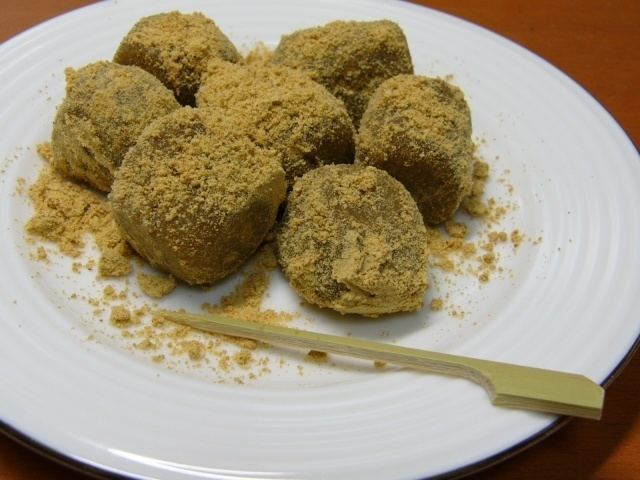 | ||
Similar Mochi, Muscovado, Warabimochi, Sweet bean paste, Wagashi | ||
How to make soybean powder kinako healthy food
Kinako (黄粉 or きなこ), also known as roasted soybean flour, is a product commonly used in Japanese cuisine. In English, it is usually called "roasted soy flour". More precisely it is "roasted whole soy flour". Usage of the word kinako appeared in cookbooks from the late Muromachi period (1336–1573). Kinako means "yellow flour" in Japanese.
Contents
- How to make soybean powder kinako healthy food
- What is kinako homemade kinako for raindrop cake japanese topping for dessert by sharmilazkitchen
- Production
- Usage
- References

What is kinako homemade kinako for raindrop cake japanese topping for dessert by sharmilazkitchen
Production

Kinako is produced by finely grinding roasted soybeans into powder. The skin of the soybean is typically removed before pulverizing the beans, but some varieties of kinako retain the roasted skin. Yellow soybeans produce a yellow kinako, and green soybeans produce a light-green product. Kinako, being composed of soybeans, is a healthy topping and flavouring which contains B vitamins and protein. Compared to boiled soybeans, however, the protein in kinako is not easily digested.
Usage

Kinako is widely used in Japanese cooking, but is strongly associated with dango and wagashi. Dango, dumplings made from mochiko (rice flour), are commonly coated with kinako. Examples include ohagi and Abekawa-mochi. Kinako, when combined with milk or soy milk, can also be made into a drink. One example of its use in popular foods is warabimochi, which is a famous kinako-covered sweet.

